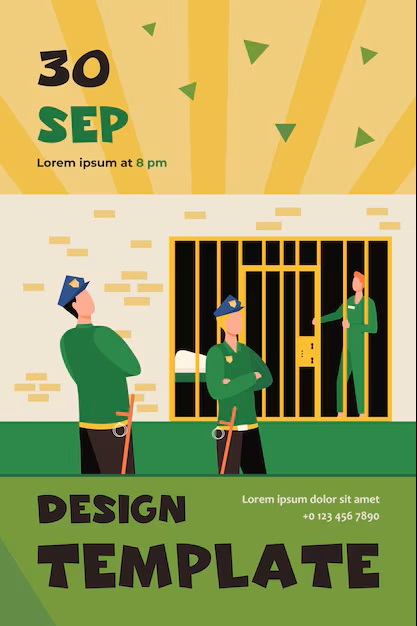There has been a significant development in the realm of family law with the recent enactment of a ground-breaking measure aimed at simplifying the procedure for stepparents seeking to adopt their spouse’s child. This progressive legislation signifies a momentous shift in the legal landscape, revolutionizing the adoption process and paving a smoother path for countless families.
The advent of this landmark law brings forth a host of benefits and alleviates the burdensome hurdles that previously impeded stepparent adoptions. In an era where blended families are increasingly prevalent, this legislative reform recognizes the importance of creating a secure and nurturing environment for all children involved. By streamlining the adoption process, this new legislation empowers stepparents to solidify their bonds with their stepchildren and reinforces the commitment and love they share as a family unit.
One of the primary aims of this transformative law is to decrease the often discouraging timeframes and complexities that have long plagued the adoption process. By eliminating the arduous paperwork and redundant procedures, this legislation seeks to expedite the legal transition, providing a more efficient and accessible avenue for stepparents to establish their parental rights. Furthermore, the law introduces innovative provisions that emphasize the paramount importance of considering the best interests of the child, safeguarding their welfare and ensuring that their emotional well-being remains at the forefront throughout the adoption process.
Benefits for Adoptive Families
Adoptive families can reap numerous advantages as a result of the recent legislation that simplifies the process of stepparent adoptions. The new law brings a range of positive changes to families, making the adoption journey more accessible, efficient, and supportive.
One of the primary benefits for adoptive families is the increased ease and convenience of navigating the adoption process. The legislation streamlines the paperwork and legalities involved in stepparent adoptions, reducing the time and complexity previously associated with such procedures. This, in turn, allows families to focus more on building their relationships and creating a stable and loving environment for the child.
Furthermore, the new law promotes a sense of security and stability for adoptive families. By providing clearer guidelines and regulations, it ensures that families feel confident and protected throughout the adoption process. This enables families to approach adoption with peace of mind, knowing that their rights and responsibilities as parents are well-defined and safeguarded by the law.
Additionally, the legislation brings financial benefits to adoptive families. The simplified process reduces the costs associated with stepparent adoptions, making it more affordable for families to provide a forever home for children in need. This financial relief can alleviate the financial burden typically associated with adoption, enabling families to allocate their resources towards providing a nurturing and enriching upbringing for their adopted child.
Moreover, the new law recognizes and supports the emotional needs of adoptive families. It encourages the availability of counseling and support services, both during the adoption process and throughout the post-adoption period. By acknowledging the unique challenges and joys that come with adoption, the legislation aims to ensure that adoptive families have access to the necessary emotional support and guidance, fostering resilience and strong family bonds.
In summary, the recent legislation brings numerous benefits to adoptive families, enhancing accessibility, ease, and support throughout the stepparent adoption process. By simplifying procedures, providing legal protection, reducing financial burdens, and addressing emotional needs, the law aims to create a positive and empowering experience for all involved parties.
Streamlining the Adoption Process
Efforts have been made to simplify and expedite the procedure of adopting a child, making the experience more efficient and accessible for individuals looking to become parents. This section focuses on the various measures implemented to streamline the adoption process, ensuring a smoother transition for both the adoptive parents and the child.
1. Standardization of Documentation
In order to streamline the adoption process, a key step involves standardizing the required documentation. By establishing a clear and uniform set of documents needed for adoption, adoptive parents can navigate the process more seamlessly, eliminating confusion and delays caused by inconsistent or ambiguous requirements.
2. Centralized Adoption Database
To further facilitate the adoption process, a centralized adoption database has been established. This comprehensive database allows prospective adoptive parents to access information about available children, ensuring a more efficient matching process. By centralizing this information, the need for multiple applications and redundant paperwork is greatly reduced, expediting the overall adoption timeline.
Additionally, the centralized adoption database provides a platform for adoptive parents to submit their adoption applications online, eliminating the need for physical paperwork and reducing the risk of lost or misplaced documents. This digital approach not only streamlines the authentication and verification process, but also speeds up the communication between adoptive parents and adoption agencies or social workers.
3. Supportive Resources and Counseling
An essential aspect of streamlining the adoption process is offering supportive resources and counseling to prospective adoptive parents. By providing comprehensive guidance, resources, and counseling services, potential barriers and challenges can be addressed in a timely manner, ensuring a smoother adoption journey for all parties involved.
- Workshops and seminars: These events provide adoptive parents with the necessary education and information regarding the adoption process, legal considerations, and post-adoption support.
- Counseling services: Professional counselors offer emotional support and guidance to adoptive parents, helping them navigate the complex emotional aspects of the adoption journey.
- Peer support groups: Connecting adoptive parents with others who have gone through or are currently experiencing the adoption process creates a network of support, allowing for the exchange of advice and experiences.
By providing adoptive parents with the tools and support they need, the adoption process can be streamlined, making it more accessible and efficient for those who wish to bring a child into their family.
Removing Legal Barriers for Stepparents
In recent legislation aimed at simplifying the legal process for stepparents, significant strides have been made towards eliminating obstacles and hurdles that previously hindered stepparents from adopting their stepchildren. This groundbreaking legislation strives to streamline and facilitate the adoption process for those stepping into parental roles within blended families, fostering a more inclusive and supportive environment for the growth and well-being of these families.
Safeguarding the Best Interests of the Child
Ensuring the well-being and protection of children is always a top priority in any legal system. In the context of the recent legislation, designed to streamline the process of stepparent adoptions, the focus remains steadfastly on safeguarding the best interests of the child.
With the new regulations in place, the aim is to create a more efficient and accessible system that prioritizes the happiness and stability of children in blended families. By establishing guidelines and procedures that reduce unnecessary complexities, the legal framework seeks to make the process of stepparent adoptions more straightforward while still maintaining a crucial emphasis on the best interests of children involved.
This legislation recognizes the importance of ensuring a stable and loving environment for children when considering stepparent adoptions. It encourages the consideration of individual circumstances, taking into account the unique needs and desires of the child involved. In doing so, it promotes the overall welfare of the child by providing a clear path for stepparents who wish to legally solidify their parental role and responsibilities.
The new measures aim to safeguard the best interests of the child by fostering communication and collaboration between all parties involved. By encouraging open dialogue and the sharing of information, the legislation seeks to create an environment where the child’s voice is heard and respected. It emphasizes the importance of allowing children to have a say in decisions that directly impact their lives, promoting a sense of empowerment and involvement in the adoption process.
Furthermore, the legislation emphasizes the importance of conducting thorough background checks and assessments to ensure the suitability of the stepparent seeking adoption. By prioritizing the well-being and safety of the child, the law aims to prevent any potential harm or negative impact on the child’s life. This careful consideration of the prospective stepparent’s character and commitment further reinforces the focus on safeguarding the child’s best interests.
In conclusion, the new legislation surrounding stepparent adoptions aims to simplify the process while keeping the child’s best interests at heart. By promoting stability, communication, and thorough assessments, it strives to create a legal framework that prioritizes the well-being and long-term happiness of children in blended families.
Increasing Opportunities for Blended Families
In the context of the topic “New Law Makes Stepparent Adoptions Easier,” this section focuses on the positive impact of the legislation on blended families. Blended families, which consist of stepparents and children from previous relationships, often face unique challenges in establishing legal parent-child relationships. The new law aims to provide increased opportunities and support for these families, making it easier for stepparents to adopt their stepchildren and establish a stronger bond as a family unit.
Facilitating Legal Recognition
One of the key benefits of the new legislation is that it streamlines the process of legal recognition for blended families. The law recognizes the importance of establishing legal parent-child relationships in blended families, enabling the stepparents to assume full responsibility and provide essential support for their stepchildren. With the simplified adoption process, blended families can overcome legal hurdles more efficiently, ensuring the rights and protection of all family members involved.
Building Stronger Family Bonds
The legislative changes not only offer increased legal opportunities but also contribute to the strengthening of family bonds within blended families. Stepparent adoptions provide a formal acknowledgment of the loving and nurturing relationships that exist between stepparents and their stepchildren. By removing barriers and simplifying the adoption process, the new law empowers and encourages blended families to build a deeper sense of unity, commitment, and emotional security.
In conclusion, the new legislation offers significant opportunities for blended families by facilitating the legal recognition of stepparents and their stepchildren. With a streamlined adoption process and increased support, blended families now have a greater chance to establish and solidify their family bonds, creating a nurturing and loving environment for all family members involved.
Fostering Stability and Security in Family Units
The new legislation promoting stepparent adoptions aims to enhance the sense of stability and security within family units. This crucial measure strives to solidify the emotional bonds between stepparents and their stepchildren, strengthening the foundation of these blended families.
Promoting Emotional Connection and Well-being
By facilitating the process of stepparent adoptions, the law recognizes the importance of fostering emotional connection and well-being within family units. When a stepparent is able to legally adopt their stepchild, it signifies a commitment to their relationship and provides a sense of permanence and security for all parties involved.
Facilitating Legal Rights and Responsibilities
Stepparent adoptions not only solidify emotional connections but also provide legal rights and responsibilities to both the stepparent and the child. This process ensures that the stepparent can fully participate in decision-making and act as a responsible guardian for their stepchild, fostering a stable and secure environment within the family unit.
- Enhances emotional bonds within blended families
- Establishes a sense of permanence and security
- Provides legal rights and responsibilities
- Fosters stability and security within family units
In conclusion, the new legislation for stepparent adoptions aims to foster stability and security in family units by promoting emotional connection, well-being, and legal rights and responsibilities. By recognizing and supporting the importance of these factors, the law helps create a nurturing environment for blended families.
Question-answer: New Law Makes Stepparent Adoptions Easier
What are the necessary steps for a non-biological parent to legally adopt a child if the biological father does not consent to the adoption?
If the biological father does not consent to the adoption, the non-biological parent must petition the court for termination of parental rights on grounds such as abandonment or failure to provide child support. Following the termination, the non-biological parent can proceed with the petition for adoption. If successful, a new birth certificate may be issued reflecting the legal parentage.
How does adoption law address the issue when a biological parent wishes to terminate parental rights to allow another individual to adopt their child?
Under adoption law, a biological parent can voluntarily terminate their parental rights to allow another individual to adopt the child. This process typically requires the parent to provide written consent to the adoption, after which the court reviews the petition to ensure it serves the best interests of the child before approving the termination and subsequent adoption.
What is required for a legal parent to adopt an abandoned child when the biological parent’s whereabouts are unknown?
To adopt an abandoned child when a biological parent’s whereabouts are unknown, the legal parent must file a petition to terminate the biological parent’s rights due to abandonment. The court will likely require efforts to contact the biological parent, and if these are unsuccessful, the court may grant the termination of parental rights, allowing the legal parent to adopt the child.
What steps must a stepparent take to adopt a stepchild in Texas, and how does Texas law impact this process?
In Texas, a stepparent who wishes to adopt their stepchild must first file an adoption petition with the family court. The child’s other biological parent must consent to the stepparent adoption unless the court finds that this parent has abandoned the child or otherwise failed to meet parental obligations, such as failing to pay child support. The process concludes with an adoption hearing where the court decides if the adoption is in the best interests of the child.
How does a family law attorney assist in the stepparent adoption process when the biological parent does not consent?
An experienced family law attorney can guide the stepparent through the legal proceedings necessary to attempt stepparent adoption without the consent of the biological parent. The attorney will help establish grounds for the adoption, such as demonstrating that the biological parent has abandoned the child or is unfit, and represent the stepparent in the final adoption hearing.
What are the requirements for a stepparent to adopt a stepchild if they are not married to the child’s parent in Texas?
Under Texas law, a stepparent must be legally married to the child’s parent to file a petition for stepparent adoption. The marital relationship establishes a legal connection to the child, which is a prerequisite for adopting the child. If the stepparent is not married to the child’s parent, the stepparent cannot proceed with the adoption under current Texas stepparent adoption laws.
What is the role of an adoption attorney in ensuring that an adoption order grants the stepparent legal rights to the child?
An adoption attorney plays a critical role in stepparent adoption cases by ensuring that all legal requirements are met for the court to grant the stepparent legal rights to the child. This includes preparing and filing the necessary legal documents, representing the family in court, and providing advice on how to navigate any challenges, such as objections from the non-consenting biological parent.
How is the child’s best interest determined in a stepparent adoption case in Texas, especially when the biological parent contests the adoption?
In Texas, the child’s best interest in a stepparent adoption case is determined by considering factors such as the emotional and physical needs of the child, the stability the stepparent can provide, and the existing relationship between the stepparent and the child. If the biological parent contests the adoption, the court also considers the nature of the existing parent-child relationship and the potential impact of changing legal parentage on the child’s welfare. The court’s decision ultimately focuses on ensuring the most stable and supportive environment for the child.








